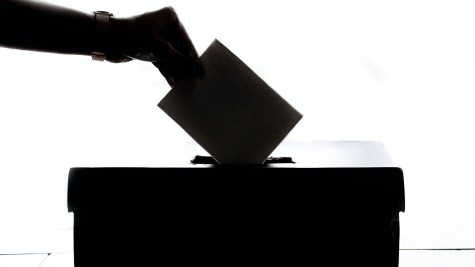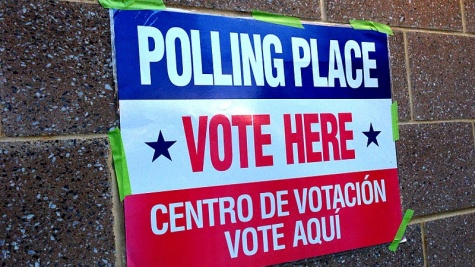New Report: How We Voted in 2022
Launching the 2022 Survey of the Performance of American Elections report and dataset
Today we are thrilled to launch our report on the 2022 Survey of the Performance of American Elections, with its accompanying dataset.
The Survey of the Performance of American Elections (SPAE) provides information about how Americans experienced voting in the most recent federal election. The survey has been conducted after federal elections since 2008, and is the only public opinion project in the country that is dedicated explicitly to understanding how voters themselves experience the election process.
We are delighted to announce that our report detailing findings from the 2022 SPAE is now available to read, and that the 2022 dataset is now available for researchers to access and use!
10,200 registered voters responded to the 2022 survey—200 observations in each state plus the District of Columbia. We are proud to once again offer this comprehensive, nationwide dataset at the state level documenting election issues as experienced by voters.
Read the Report:
A Brief Summary
Don't have time to read the full report now, or just want to access the key findings? We've excerpted some of the report's executive summary below.
Voting by mail
- The percentage of voters casting ballots by mail retreated to 32 percent, down more than 10 points from 2020. more than doubling the fraction from 2016. The share of voters casting ballots on Election Day grew to 50 percent, from 31 percent in 2020.
- Forty-six percent of Democrats, compared to 27 percent of Republicans, reported voting by mail. This is down from 60 percent for Democrats and 32 percent for Republicans in 2020.
- The use of mail to return ballots that were mailed to voters rebounded in 2022, to 62 percent, compared to 53 percent in 2020. Twenty-one percent of mail ballots were returned to drop boxes, which is virtually unchanged from 2020.
- Almost five percent of voters who returned their ballot to a drop box reported seeing something disruptive, such as demonstrators, when they dropped off their ballot.
- Forty percent of mail voters reported using online ballot tracking.
In-person voting
- The use of schools to vote in-person continued its decade-long gradual decline.
- Average wait times to vote were roughly equal to the last midterm election for Election Day voters (6 percent waiting over 30 minutes compared to 5 percent in 2020); they declined for early voters (4 percent reported waiting over 30 minutes compared to 7 percent in 2020).
- Ten percent of Election Day voters and 9 percent of early voters reported seeing something disruptive when they voted. The most common disruptions were voters talking loudly and voters in a dispute with an election worker or other voter.
- Approximately 3 percent of in-person voters reported seeing demonstrators outside their polling place claiming the election was fraudulent.
Satisfaction with voting
- Voters who cast ballots in person and by mail continued to express high levels of satisfaction with the process, as in past years.
Reasons for not voting
- The primary reported reason for not voting in 2022 was not knowing enough about the choices (12.1 percent of non-voters), followed by not being interested (11.7 percent). and being too busy (9.8 percent).
Voter confidence
- Measured across all voters, confidence that votes were counted as intended remained similar to past years.
- The partisan gap in confidence that opened up in 2020 closed somewhat in 2022, with the primary reason being Republicans becoming more confident.
- Compared to 2020, the Democratic-Republican gap in state-level confidence declined significantly in most states. Major exceptions were Pennsylvania and Arizona.
- Among Republicans, lack of confidence in whether votes were counted as intended at the state level was strongly correlated with whether Donald Trump won the respondent’s state and with the fraction of votes cast by mail in the state.
Election security measures
- Of a set of common security measures used by election officials, respondents were most aware of logic-and-accuracy testing and securing paper ballots. One-third of respondents stated that election officials used none of the measures asked about.
- Respondents stated that the security measures that would give them the greatest assurance about the security and integrity of elections were logic-and-accuracy testing (74 percent), securing paper ballots (74 percent), and post-election audits (72 percent).
Fraud
- Partisan attitudes about the prevalence of several types of vote fraud remained polarized in 2020, although less so than in 2020.
Reform
- Requiring electronic voting machines to have paper backups, requiring a photo ID to vote, automatically changing registrations when voters move, requiring election officials to be nonpartisan, and declaring Election Day a holiday were supported by majorities of both Democrats and Republicans.
- Adopting automatic voter registration, moving Election Day to the weekend, and Election-Day registration are supported by a majority of respondents, but not by a majority of Republicans.
- Ranked-choice voting, conducting elections entirely by mail, and allowing Internet voting were opposed by a majority of respondents but supported by a majority of Democrats; hand-counting paper ballots was opposed by a majority of respondents but supported by a majority of Republicans.
- Voting on cell phones was opposed by majorities of Democrats and Republicans.
Access the Data + Learn More
Data and documents related to all versions of the Survey of the Performance of American Elections are available from the Harvard Dataverse, as is direct access to the 2022 data and documentation. For those links, or more information about the survey in general, navigate to:


